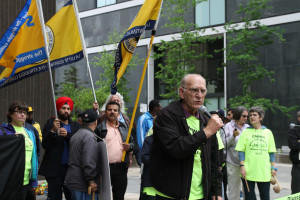Times & Transcript (Moncton), February 11th, 2015
Page: B2
FREDERICTON * New Brunswick’s Liberal government says it will soon make changes that will help more people get compensation for work-related injuries.
Francine Landry, the minister of post-secondary education, training and labour, said in an interview Tuesday it became obvious last year with the growing number of complaints and media coverage that something had to be done to help workers who feel they have been unjustly cut off from receiving some kind of insurance payment when they are hurt at work.
“We’ve listened and looked at the cases and the government wants to take action,” she said. “A new direction is needed for WorkSafe.”
WorkSafeNB is the independent agency responsible for making sure workers are properly compensated when they’re hurt.
“We want to re-establish the balance between the rights of the injured workers and the financial interests of the employers that are contributing to the fund,” Landry said. “We want to see more fairness in the system and the process, and we want to see the system work more quickly in response to the injured workers’ needs.”
The organization has been without a chairperson since the fall of 2014. The minister pledged her government would soon announce an interim chairperson to lead the work of the board in charge.
After a slew of media stories on disgruntled workers last year, WorkSafeNB defended its practices, pointing out it had to thoroughly investigate claims and ensure people weren’t cheating the system. It said its cautionary approach had led to some of the lowest rates for employers, who are forced by law to contribute to the program’s funds. Workers do not pay into the plan, unlike employment insurance, which provides income to people who lose their jobs through no fault of their own.
“Injured workers don’t have the right to sue employers for injuries because they are supposed to get some sort of compensation,” Landry said. “That’s the basic concept behind the law. But it’s a balance – we need to make sure everyone is treated fairly.”
Landry did not provide a timeline for the changes, saying consultations would happen as soon as possible.
Workers compensation has existed under different titles for about a century, but its main purpose remains the same: to protect people financially who get hurt at work. A financial incentive is also in place for employers to improve workplace safety, as premiums go up when injuries rise and more payments are made.


